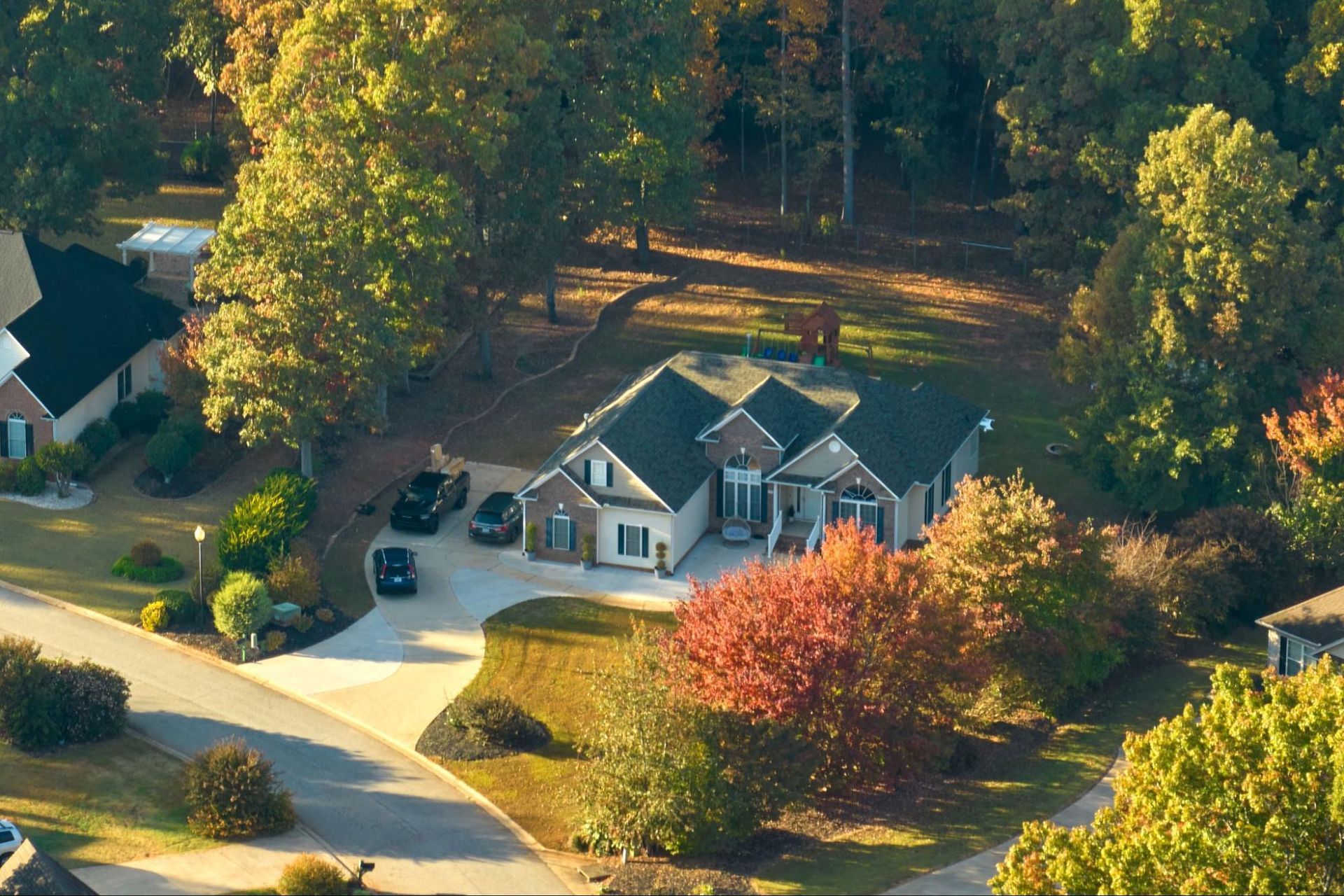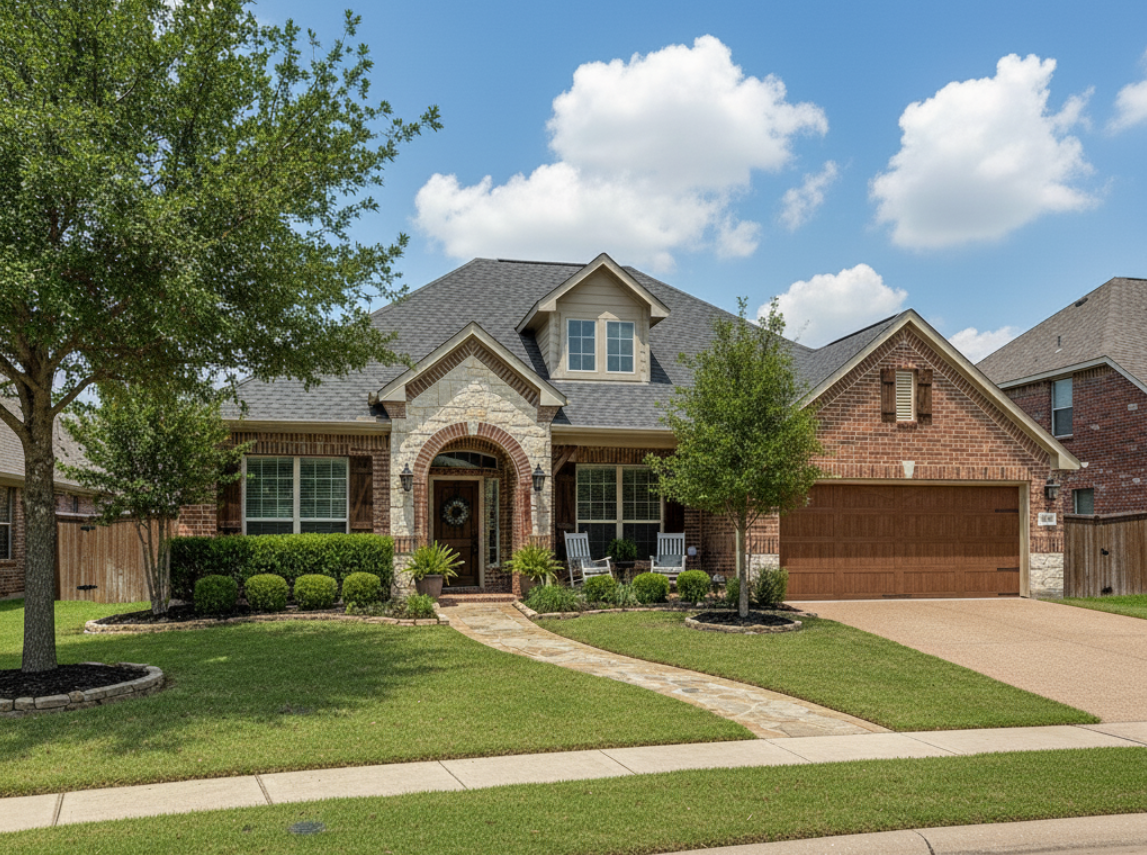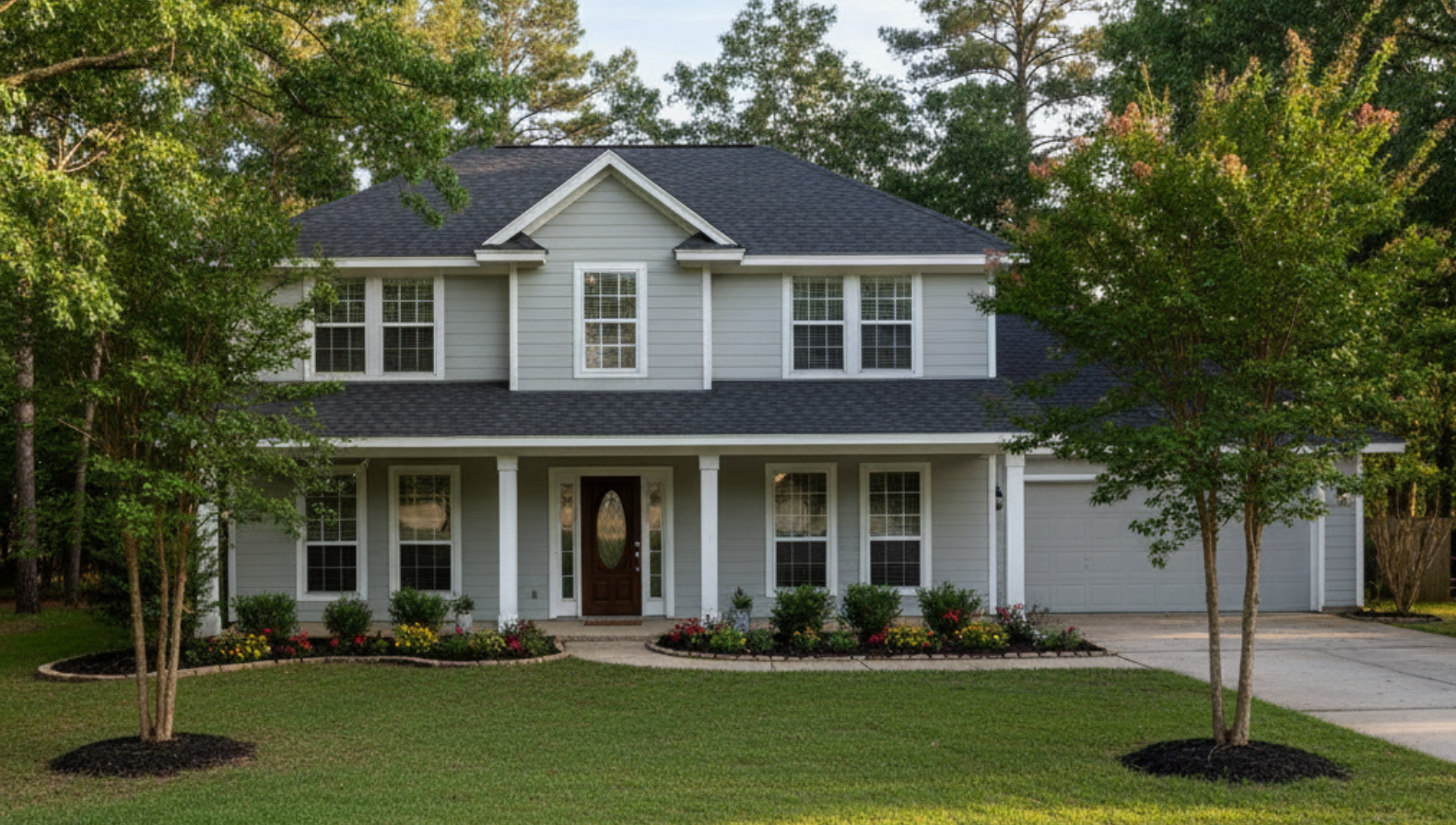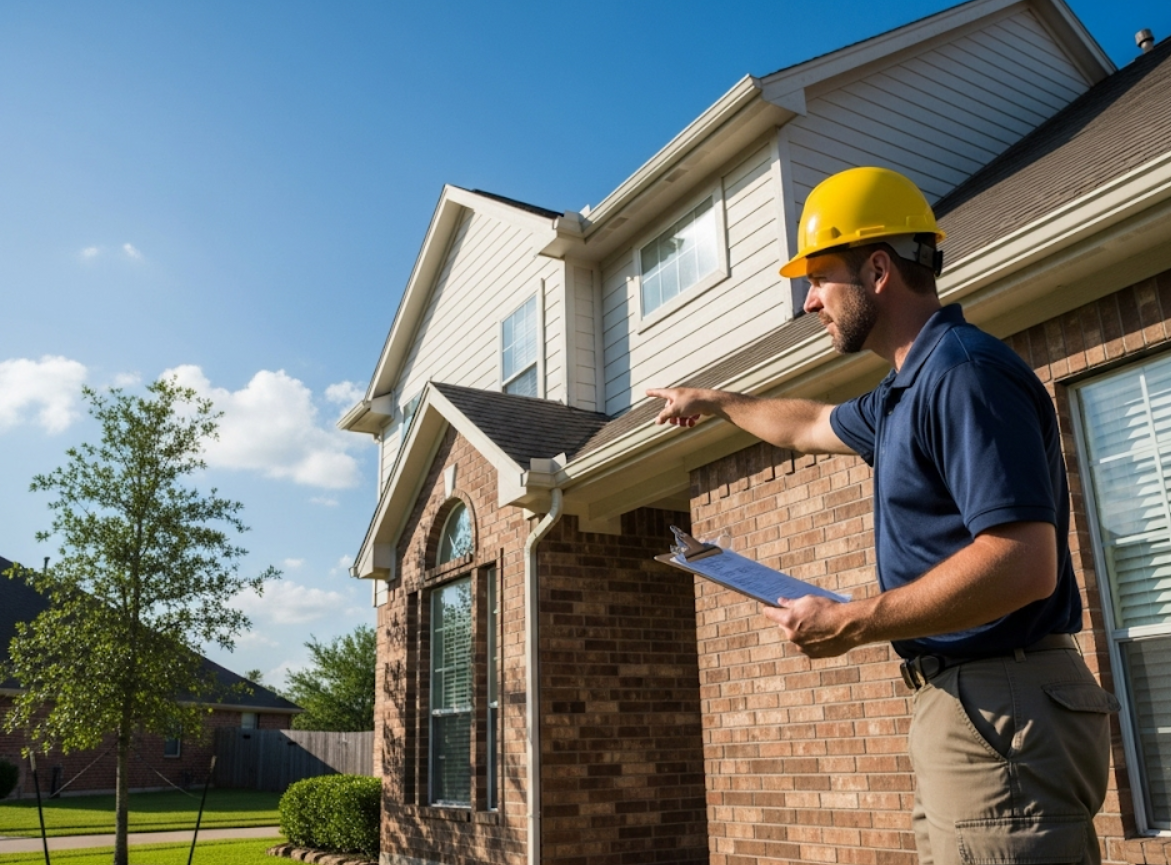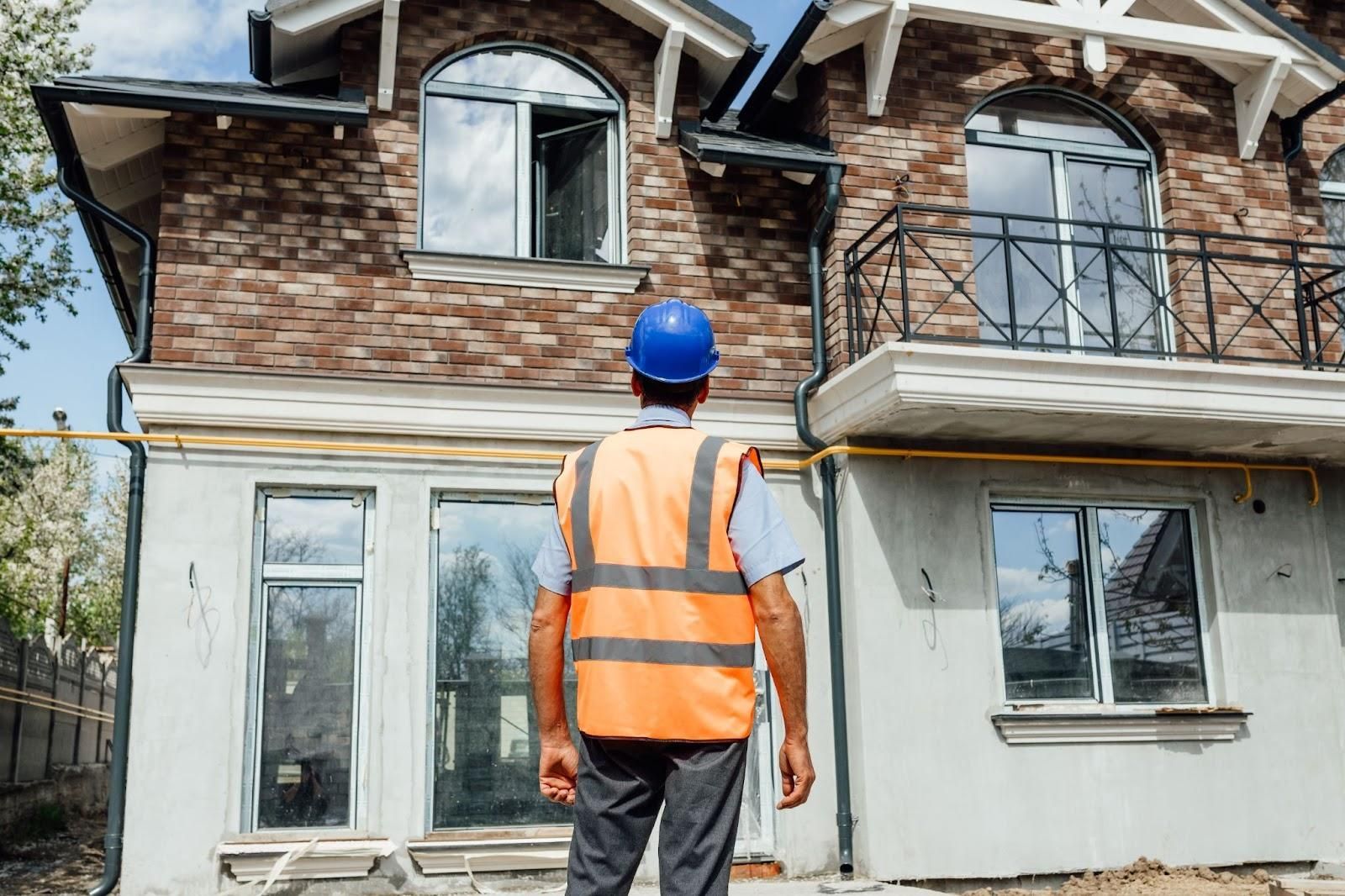How to Repair Drywall Corner Beads: Step-by-Step Guide for a Flawless Finish
Drywall corner bead repair is a common yet often frustrating task for homeowners. Over time, corners can chip, crack, or become damaged due to everyday wear and tear or accidental impacts. These unsightly imperfections not only detract from a room’s aesthetics but can also lead to more significant issues if left unaddressed.
Understanding the importance of maintaining these corners is crucial for preserving the integrity of drywall installations. Homeowners often find themselves searching for effective solutions to restore their walls to pristine condition. Whether it's a minor repair or a more extensive restoration, knowing how to tackle drywall corner bead repair can save time and money while ensuring a polished finish that enhances the overall look of a home.
Overview of Drywall Corner Bead Repair
Drywall corner bead repair addresses common damage to corners, essential for maintaining property aesthetics and structural integrity. Proper repair techniques restore functionality and extend the lifespan of drywall installations.
Importance of Corner Bead
Corner beads provide reinforcement and protection at drywall corners. They help prevent chipping, cracking, and damage from impacts, ensuring durability. Maintaining intact corner beads enhances the visual appeal of walls and contributes to a polished finish. Properly installed and maintained corner beads also comply with building codes, promoting long-term structural integrity.
Common Issues with Corner Beads
Corner beads often face several issues, including dents, cracks, and peeling paint. Dents occur due to accidental impacts with furniture or equipment, while cracks can develop from settling or temperature fluctuations. Peeling paint typically results from moisture exposure or improper application. Identifying and addressing these common issues promptly prevents further damage, ensuring the longevity of drywall corners.
Tools and Materials Needed
For drywall corner bead repair, specific tools and materials facilitate efficient and effective restoration. Utilizing the correct items ensures a smooth repair process.
Essential Tools
- Utility Knife: Cuts drywall or corner bead accurately.
- Taping Knife: Spreads joint compound smoothly over the repair.
- Putty Knife: Fills small gaps and applies joint compound to tight spaces.
- Drywall Saw: Allows for cutting drywall to fit around corner areas easily.
- Measuring Tape: Ensures precise measurements for accurate cuts.
- Screw Gun: Secures corner bead to the drywall effectively.
Recommended Materials
- Corner Bead: Provides structural support and protects corners from damage.
- Joint Compound: Fills gaps and creates a seamless finish on the repairs.
- Drywall Tape: Reinforces joints and binds the materials together securely.
- Primer: Prepares the surface for paint, ensuring smooth coverage.
- Paint: Matches the wall color after repairs, restoring the aesthetic.
Using these tools and materials guarantees effective drywall corner bead repair, enhancing the integrity and appearance of the home.
Step-by-Step Repair Process
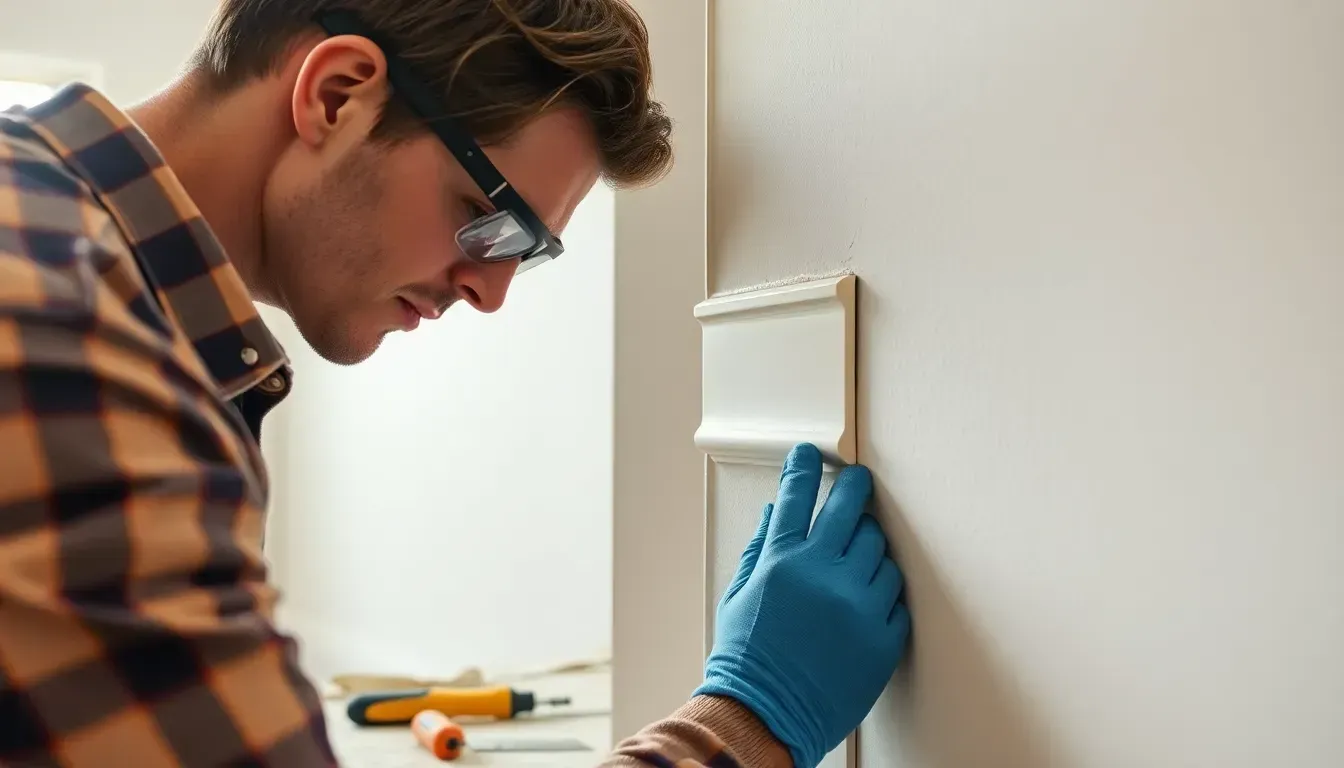
Repairing drywall corner beads involves a precise approach to ensure a seamless finish. Follow these steps for an effective repair.
Preparing the Area
Clearing the workspace ensures safety and efficiency. Remove furniture and cover the floor with a drop cloth. Inspect the corner bead for visible damage. Gather all necessary tools, including a utility knife, putty knife, and joint compound. Safety equipment like gloves and goggles is essential to protect against debris and dust during repairs.
Removing Damaged Corner Bead
Cut through the damaged corner bead using a utility knife. Score along the fastening points to detach it cleanly. Use a putty knife to pry away any remaining pieces gently. Inspect the underlying drywall for damage. If the drywall is compromised, patch the area before installing a new corner bead.
Installing New Corner Bead
Position the new corner bead flush against the drywall. Secure it with drywall screws, placing screws about 12 inches apart. Apply a bead of joint compound along the edges of the corner bead. Smooth the compound with a putty knife, ensuring it adheres properly and covers all edges. Allow the compound to dry completely before sanding.
Finishing Touches
Sand the dried joint compound to create a smooth finish. Apply a second coat of joint compound if necessary for a flawless surface. Once dry, sand again to reach the desired smoothness. Prime and paint the repaired area to match the surrounding wall, restoring the visual appeal. Regular maintenance of corner beads prevents future damage.
Tips for Successful Repairs
Successful drywall corner bead repair ensures durability and aesthetic appeal. Adhering to best practices minimizes the risk of future damage.
Best Practices
- Preparation: Clear the area thoroughly before starting repairs, ensuring safety and access to work.
- Inspection: Examine the existing corner bead for any hidden damages before installation.
- Tools: Use appropriate tools like a taping knife and utility knife to achieve clean cuts and finishes.
- Technique: Apply joint compound smoothly, feathering the edges to blend with the surrounding wall.
- Painting: Choose a paint that matches the existing wall to maintain a uniform appearance.
Avoiding Common Mistakes
- Rushing: Taking time during each step to ensure proper installation prevents mistakes.
- Poor adhesion: Always ensure the corner bead is securely attached to avoid future dislodging.
- Skipping primer: Apply primer before painting to enhance adhesion and durability of the final coat.
- Neglecting sanding: Proper sanding of the joint compound offers a smooth surface, crucial for a professional finish.
- Ignoring drying time: Allow adequate time for each layer to dry before proceeding to the next step.
These tips promote successful drywall corner bead repair, enhancing structural integrity and aesthetics.
Conclusion
Drywall corner bead repair is essential for maintaining the integrity and appearance of walls. Addressing damage promptly not only prevents further issues but also enhances the overall aesthetic of a home. With the right tools and techniques, homeowners can confidently tackle repairs, ensuring their walls remain sturdy and visually appealing.
By following best practices and avoiding common mistakes, the repair process becomes more efficient and effective. Regular maintenance of corner beads will extend the life of drywall installations, safeguarding against future damage. Ultimately, investing time in these repairs pays off in a polished and well-maintained living space.
Frequently Asked Questions
What is a drywall corner bead?
A drywall corner bead is a protective strip installed at the corners of drywall to reinforce them against damage, such as chipping or cracking. It helps maintain the wall's structural integrity and enhances the visual appeal.
Why do drywall corners get damaged?
Drywall corners can become damaged due to normal wear and tear, accidental impacts, or improper handling during installation. Over time, these factors can lead to dents, cracks, or peeling paint.
How can I fix a damaged drywall corner bead?
To fix a damaged corner bead, first remove the damaged section, inspect the underlying drywall, and then securely install a new corner bead. Finish by applying joint compound, sanding, priming, and painting.
What tools and materials do I need for corner bead repair?
You will need a utility knife, taping knife, putty knife, drywall saw, measuring tape, and screw gun. Recommended materials include corner bead, joint compound, drywall tape, primer, and paint.
How can I prevent future damage to my drywall corners?
To prevent future damage, regularly inspect your corner beads, properly maintain walls, and handle objects near corners with care. Promptly address any signs of wear or damage to ensure longevity.
What common mistakes should I avoid during the repair process?
Avoid rushing the repair, neglecting proper adhesion, skipping primer, and ignoring drying times. Each step is crucial for a quality repair and ensuring the longevity of your drywall corners.
How do I achieve a smooth finish when repairing corner beads?
Achieve a smooth finish by carefully applying joint compound, allowing it to dry completely, and sanding it down evenly. Finally, apply a coat of primer before painting to ensure a uniform appearance.
Is it necessary to paint after repairing a corner bead?
Yes, painting after repairing a corner bead is essential for both aesthetics and protection. A fresh coat of paint helps blend the repair with the surrounding wall and protects the joint compound.

